




 |

|
Parkes Narrabri Mopra VLBI SKA | |
 |
|||
 |
|||
 |
|||
by Koribalski & Manthey (2005), MNRAS 358, 202; astro-ph/0501190, or download the pdf-file)
Abstract.
We present HI line and 20-cm radio continuum observations of the NGC 1511
galaxy group obtained with the Australia Telescope Compact Array. The data
reveal an extended, rather disturbed HI distribution for the peculiar
starburst galaxy NGC 1511 and a narrow bridge to its small companion galaxy,
NGC 1511B, which has been severely distorted by the interaction/collision
between the two galaxies. No stellar counterpart to the gaseous bridge has been
detected. In addition, we find that the peculiar optical ridge to the east of
NGC 1511 is probably the stellar remnant of a galaxy completed disrupted by
interactions with NGC 1511. The slightly more distant neighbour, NGC 1511A,
shows a regular HI velocity field and no obvious signs of interactions.
Radio continuum emission from NGC 1511 reveals three prominent sources on top
of a more diffuse, extended distribution. We derive an overall star formation
rate of 7 Msun/yr. The most enhanced star formation is found in the
south-eastern part of the disk, coincident with several bright HII regions,
and closest to the peculiar optical ridge. No continuum emission was detected
in the companions, but NGC 1511B appears to show an HII region at its faint
western edge, closest to NGC 1511. The group displays a prime example of
interaction-induced star formation activity.
Project C419:
ATCA 375+1.5A arrays (beam = 64" x 63", natural weighting), observed in 1995.
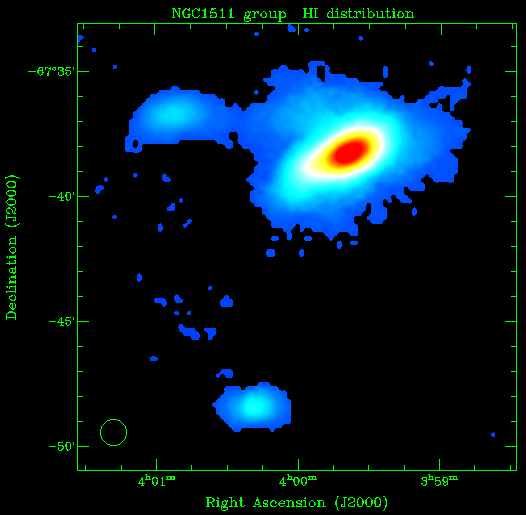 |
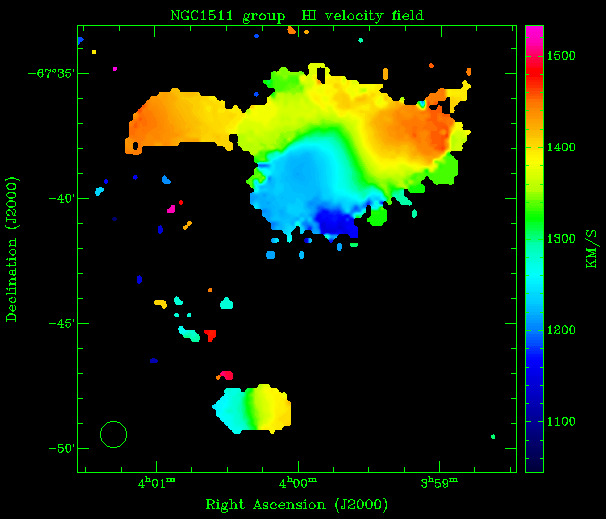 |
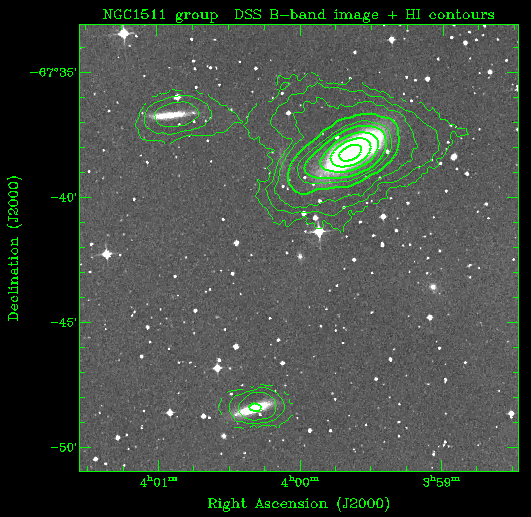 |
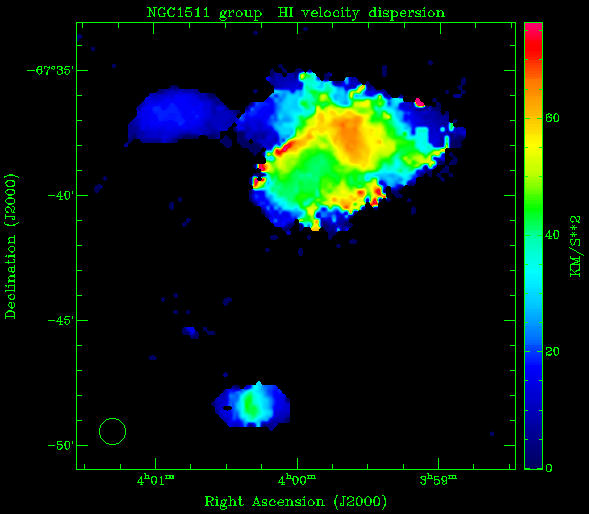 |
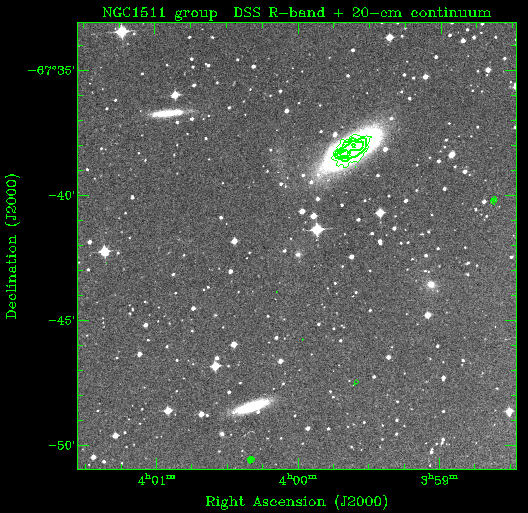 |
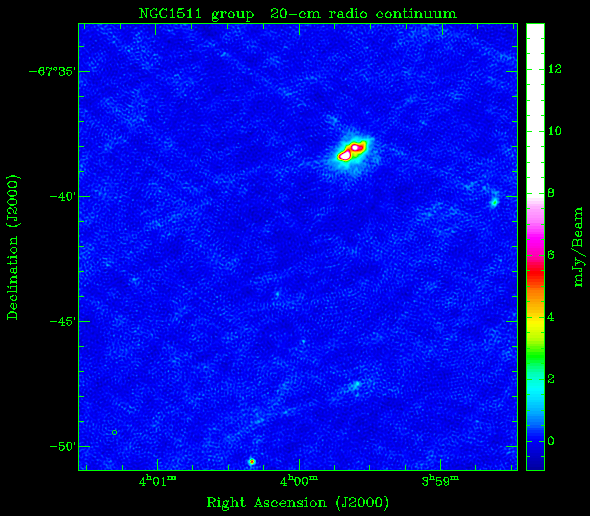 |